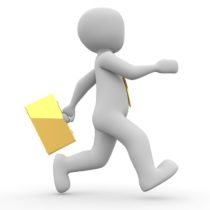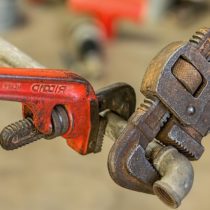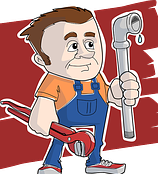Features Of The Best Pool Deck Resurface And Concrete
Related Post

Learn The Truth About 12 Week MasteryLearn The Truth About 12 Week Mastery
To succeed in business, it is not enough to have good ideas. You also need to have the right skills, and you must know how to be very productive. What many people don’t know is that productivity is a skill that can be learned. Many books and programs teach productivity, but one of the most promising one in the market is 12 week mastery by Brian P. Morgan, Todd Brown and Tom Beal. This article will tell you the truth about 12-week mastery.
Benefits
World-class team
In evaluating any book or training program, of course, one would need to look at its creators. As mentioned above, 12 Week Mastery is created by not one, not two, but three individuals who are considered masters in their fields. You can read 12 week mastery reviews to understand the program better. Brian P. Moran is an author and this program is based on his bestselling book “The 12 Week Year.” Joining Brian is Tom Beal, the creator of Remarkable Marketing and Todd Brown, the founder of Marketing Funnel Automation.
The two agreed to be part of the program because their lives were completely transformed by the techniques presented by Brian in his book. Combined, the creators of the 12 Week Mastery has more than 30 years of combined experience and knowledge among them. This is why they are very confident that whoever tries this program will surely succeed in business and life.
For success seekers
Anyone who wants to succeed in life will benefit from the 12 Week Mastery. Whether you are an entrepreneur who owns a small business or someone who belongs in a large organization, you will surely benefit from the lessons that are taught in the program. To achieve your goals, there are several skills that you need to master.
These includ e planning, motivation, and focus. You can learn these skills from other sources. What sets this program apart from others in the market is that it can teach you these skills in more in 12 short weeks. Hence the name 12 Week Mastery. If you are looking for a short cut to success, this is it.
e planning, motivation, and focus. You can learn these skills from other sources. What sets this program apart from others in the market is that it can teach you these skills in more in 12 short weeks. Hence the name 12 Week Mastery. If you are looking for a short cut to success, this is it.
The truth
The truth about 12 Week Mastery is that it is not a scam. It is created by truly successful individuals who want to share their knowledge with other people. In this program, you can find valuable lessons that you can immediately use to achieve any goal. And the best part about this program is that it gets results fast. You don’t have to wait for years.

Services Offered By Professional Plumbing ContractorsServices Offered By Professional Plumbing Contractors
Plumbers play a significant role in making people’s lives better. For any service that requires a plumber, it is always important to hire experts from Plumbers Phoenix to help you. There are various services offered by plumbing contractors. Below are top five services offered by a professional plumber.
1. Drain cleaning
One important service offered by a plumber is drain cleaning. It is quite frustrating to be in a situation where you cannot use your sink, toilet, or tub due to a faulty drainage system. It is inconveniencing to have a sink, tub, or toilet that is not working. Drain cleaning requires a professional plumber to handle it just to ensure that the results last long.
2. Faucet repair and replacement
Faucets are essential elements in adding beauty to kitchen and bathroom. There are different brands of faucets that homeowners use. When broken, a professional plumber can repair the valve, regardless of the brand. Furthermore, a professional plumber can help a homeowner replace the faucet if it is beyond repair. Therefore, in case you need an upgrade, a professional plumber is your best bet for getting the best faucet option in the market.
3. Gas lines
If you spend some time in your backyard, then you can turn to gas for fuel, particularly for heating purposes. Installation of a gas line is an essential service that should be professionally executed to avoid any surprises. This is mainly because gas lines require special permits and inspections that only a professional can handle. The work done by a plumbing contractor in installing gas lines offers complete safety at the end.
4. Water heater repair and replacement
A water heater can be a cause of frustration. This mostly happens when it starts leaking or fails to produce hot water. This problem requires a professional plumber who can be able to service water heater. A professional plumber should finish servicing within the day. You can also seek guidance from a plumber on the best brand when buying a new water heater system.
 5. Restoration services and flood cleanup
5. Restoration services and flood cleanup
Another unique service offered by a plumbing company is flooding cleanup and restoration. This is a unique service that helps flood victims get things back in order after a catastrophe. Professional plumbers also offer advice on how to prevent damages caused by floods.
Apart from the services mentioned above, you can get many other services from a professional plumbing contractor. You only need to identify the right one whenever you have a problem in your home.

How to buy atv wheels onlineHow to buy atv wheels online
Nowadays online purchasing has become very common. Shopping at a shop is not the ideal thing for a busy ATV driver. During the end month, many people start doing their shopping. Queues are very long during this time. To avoid waste of time by customers, many shops and opened the window for customers to order their shopping online.
A more advanced technology have seen the shops deliver the goods using a drone. All-terrain vehicle’s wheel can also be bought from an online store. Delivery can then be made using a van to one home using GPS tracking. How can one buy atv wheels from an online shop?
Buy from a reputable dealer
 Reputation is the most prominent asset a business can have. A reputation is goodwill, and good name of business derived from good relations between the business and the customer. A reputation is built over time. When buying atv wheels be sure to it from a reputable dealer. Who can one identify a reputable dealer? A reputable dealer is a dealer with a massive amount of sales.
Reputation is the most prominent asset a business can have. A reputation is goodwill, and good name of business derived from good relations between the business and the customer. A reputation is built over time. When buying atv wheels be sure to it from a reputable dealer. Who can one identify a reputable dealer? A reputable dealer is a dealer with a massive amount of sales.
Sales are derived from an enormous demand for goods by customers from the dealer. Buy from the dealer that is leading regarding sales and profits. A reputable dealer is one that doesn’t have any case of customer conflict. Check whether the dealer has pending customer disputes. If there is any avoid the dealer. Check what other customers say about the dealer. If he is praised and congratulated, then that is a reputable dealer. Buy from such a dealer.
After sales services from the online shop
The main reason one would prefer an online shop to any other type of shop is the ease and reliability of the services. These are made possible by great after sales services. The first service you will be sure to ask for is free delivery. A dealer should be able to transfer the wheels from the shop to the owner’s home. Great shops operate on the principle of cash on delivery. The customer should pay for his goods after he has seen them.
This will reduce the cases of customer disputes. If the wheels don’t meet the expectation of a buyer, the buyer can return the wheel or order another type of wheel. Delivery should be made within 24 hours of ordering. The other after sale service that is very important is advice on the use of the commodity.
The price of the wheels
 ATV wheels are not cheap. They are an expensive investment that is worth making. However, a dealer should not take advantage of this to charge more for a wheel. Before buying a wheel, research on it costs in some stores. Be sure to buy from the most competitive.
ATV wheels are not cheap. They are an expensive investment that is worth making. However, a dealer should not take advantage of this to charge more for a wheel. Before buying a wheel, research on it costs in some stores. Be sure to buy from the most competitive.
It is important to note that there are different types of wheels. Each wheel will cost differently. There are expensive and cheap varieties of wheels. The best shop to buy from is one that that has both the expensive and cheap types.



 5. Restoration services and flood cleanup
5. Restoration services and flood cleanup